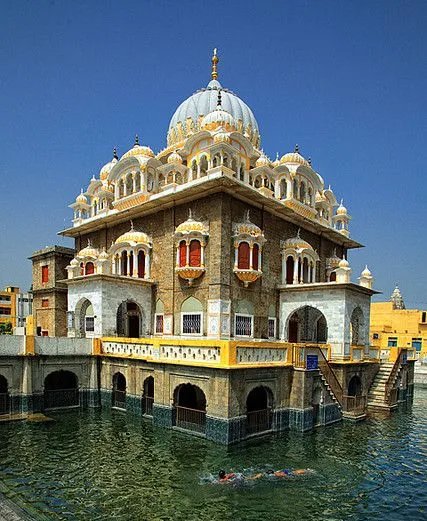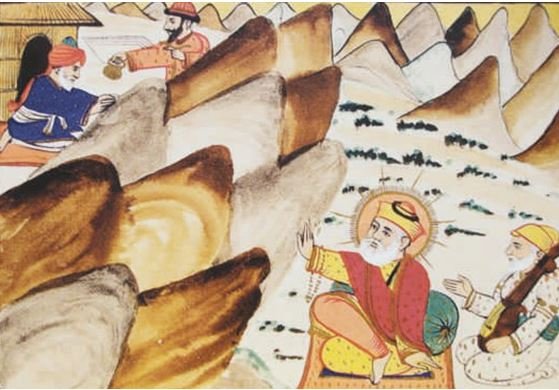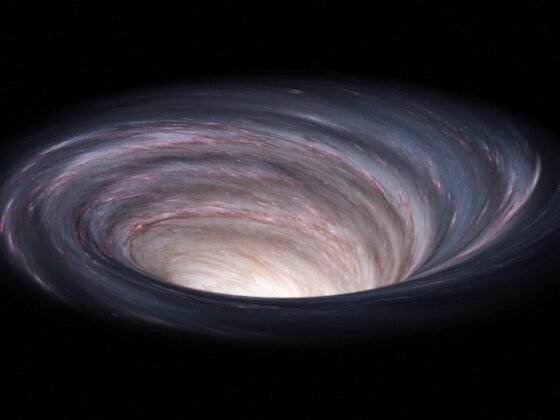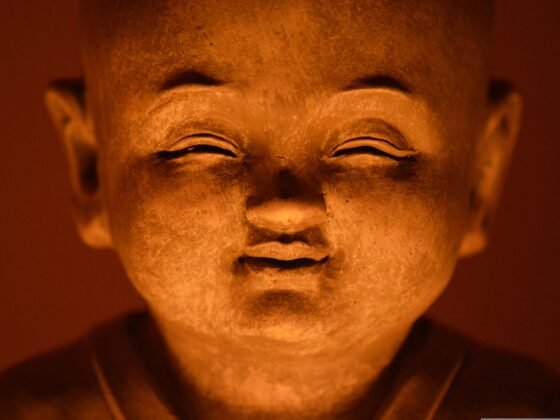Sometime between the years 1510 and 1520 Guru Nanak is said to have travelled to the Arab lands, visiting, among other places, Mecca and Baghdad. Some suggest that he even performed the Haj but there is no conclusive evidence of that. (To give the reader an idea of the timeline, it was the time just before the Mughal rule began in India.) On the way back from his Udasi (travel) abroad, Guru Nanak passed through Kabul and Peshawar and then, after crossing the Indus, halted at a small hamlet at the foot of a steep hill, short of the Margallas, where Hasan Abdal is located today.
Attracted by his teachings, Muslims and Hindus of the hamlet and the surrounding area started flocking to Guru Nanak. At the top of the hill behind the Guru’s hamlet, there lived a ‘peer’ (a Muslim ‘saint’ of sorts), called Baba Wali Kandhari. His last name referred to his origins in Kandahar, Afghanistan. Besides having a better vantage point from where he could see all that happened in the village below, Wali Kandhari also had the advantage of having a spring of fresh water nearby. The spring was also the only source of water for the people down below.
Wali Kandhari could not help noticing the ‘new saint on the block’, as it were. He saw that many more people were flocking to Guru Nanak than were visiting him. He felt a little resentment towards the Guru. What should he do? If he couldn’t stop the flow of people towards the Guru, he thought, he could stop the flow of water to the hamlet below and thus drive the Guru away.

And he did stop the water. Naturally, upset over the cutting off of their water supply, a delegation of people from the hamlet went up to the Wali to request him to be kind enough and let the water flow. But the Baba angrily sent them back taunting them about why didn’t they ask their Guru to produce water for them. When Guru Nanak heard this he asked his lifelong disciple and companion, Bhai Mardana (a Muslim), to go to Wali Kandhari and plead with him about the case of the village folks. But the Baba did not relent and Mardana came back empty-handed. Guru Nanak sent Bhai Mardana again and yet again, to beg the Baba for water but to no effect.
Becoming desperate the people turned to Guru Nanak asking him what to do. Guru Nanak told them not to despair and trust God and then, pointing to a large stone, asked them to dislodge it from the spot where it was embedded in the ground. When they pushed the stone aside fresh water gushed forth from the ground, enough for the needs of the little hamlet and some more!
Wali Kandhari saw all this from the hilltop and was surprised and dismayed at the same time. But his dismay turned into Maharaja Ranjit Singh (1780-1839). The Gurdwara houses the holy Guru Granth Sahib. A large double-storeyed hostel for the devotees/pilgrims surrounds the courtyard, the pool and the Gurdwara. There are numerous plaques and signs announcing the names of the donors and miscellaneous directions in Gurmukhi, English and Urdu.
From the courtyard of the shrine one can easily see the hilltop where Wali Kandhari camped and from where he rolled down the rock. A modern communication tower sprouts from the place now. The hilltop has also become a shrine named after Gurdwara Panja Sahib.
Gurudwara Panja Sahib is situated at Hasan Abdal, 48 km from Rawalpindi in Pakistan. This is one of the holiest places of Sikhism because of the presence of a rock having the handprint of Guru Nanak imprinted on it. Twice a year, Sikhs visit this Gurdwara from all over the world.
When the boulder came close, Guru Nanak calmly raised his right hand as if to order the rock to stop. The boulder pushed against his hand and stopped!
The Guru’s open hand got imprinted on the boulder as if pressed into wax. When Wali Kandhari saw this he needed no further proof of the spiritual reach of the Guru. He came down from the hill, touched Guru Nanak’s feet and joined the group of his devotees.

The rock with the hand imprint is embedded today in the concrete structure of the Panja Sahib building complex. Clear, fresh spring water gushes out from somewhere behind the rock and spills over into a very large pool. A deep imprint of a right hand is clearly visible on the rock underneath the thin sheet of water flowing over it. Next to the pool, on an elevated platform, stands a beautiful small Gurdwara built in the Mughal style by Wali Kandhari attracts many devotees from the surrounding area. Even Sikh pilgrims to Panja Sahib trek up the hill, a distance of over one mile, to visit the shrine.







